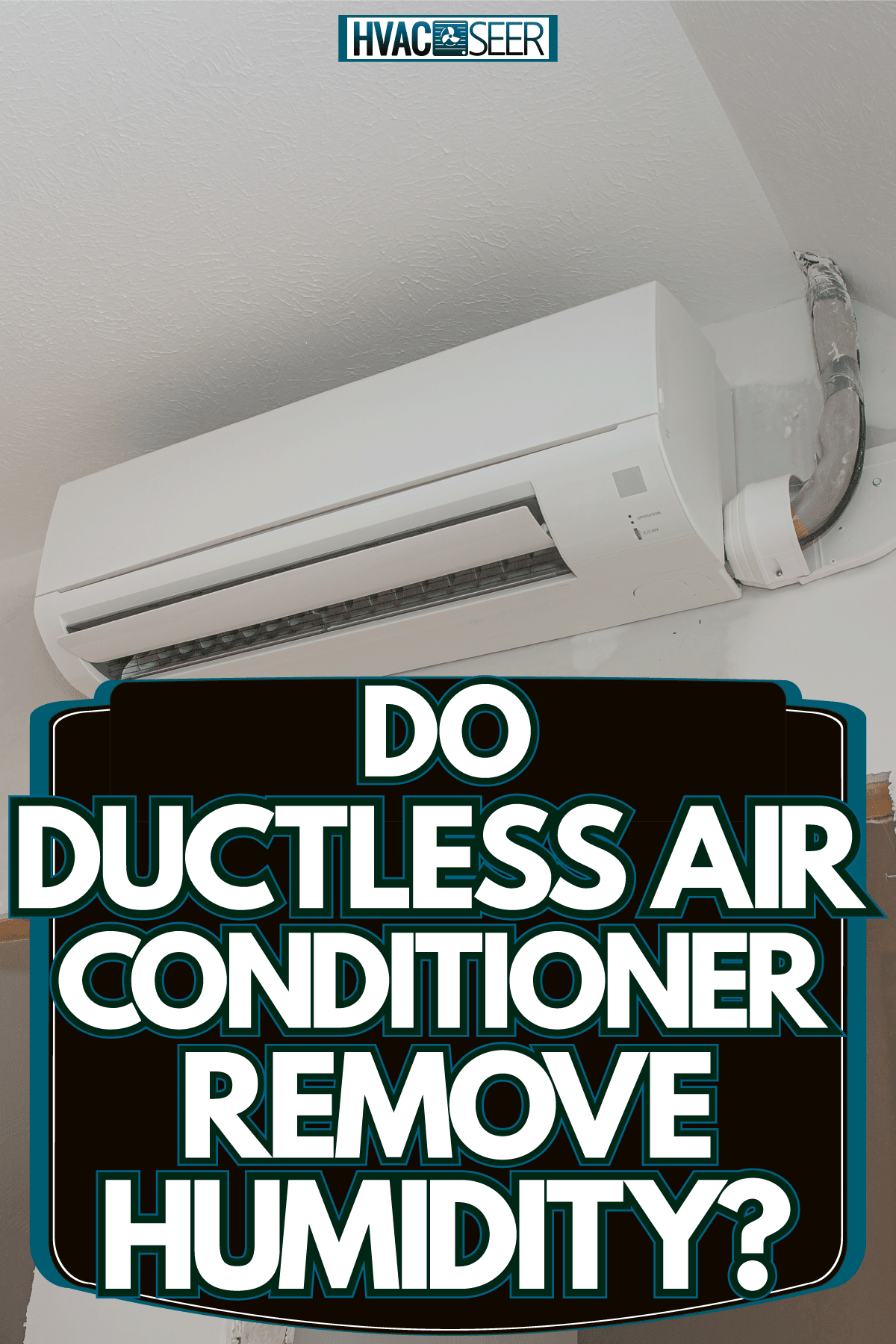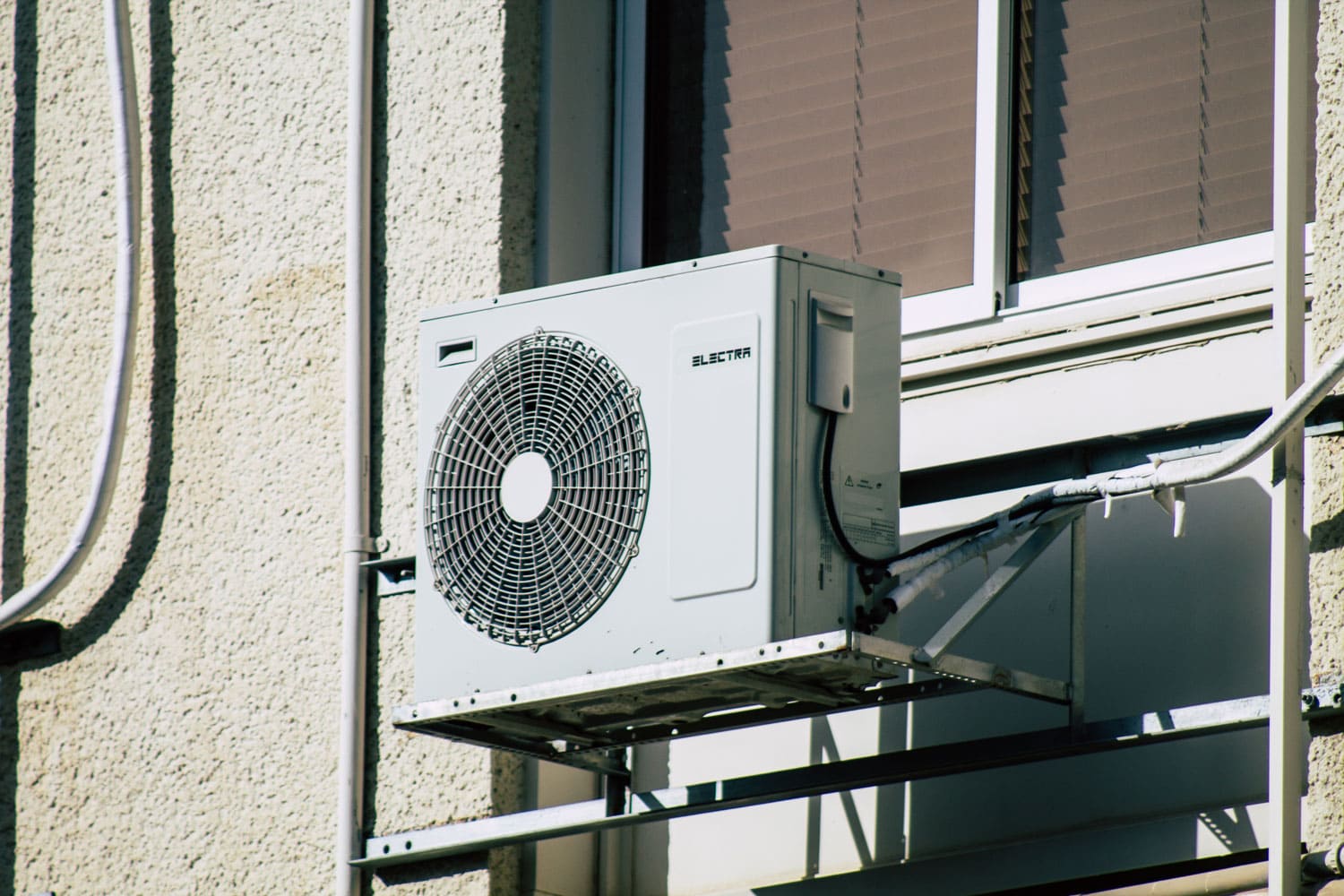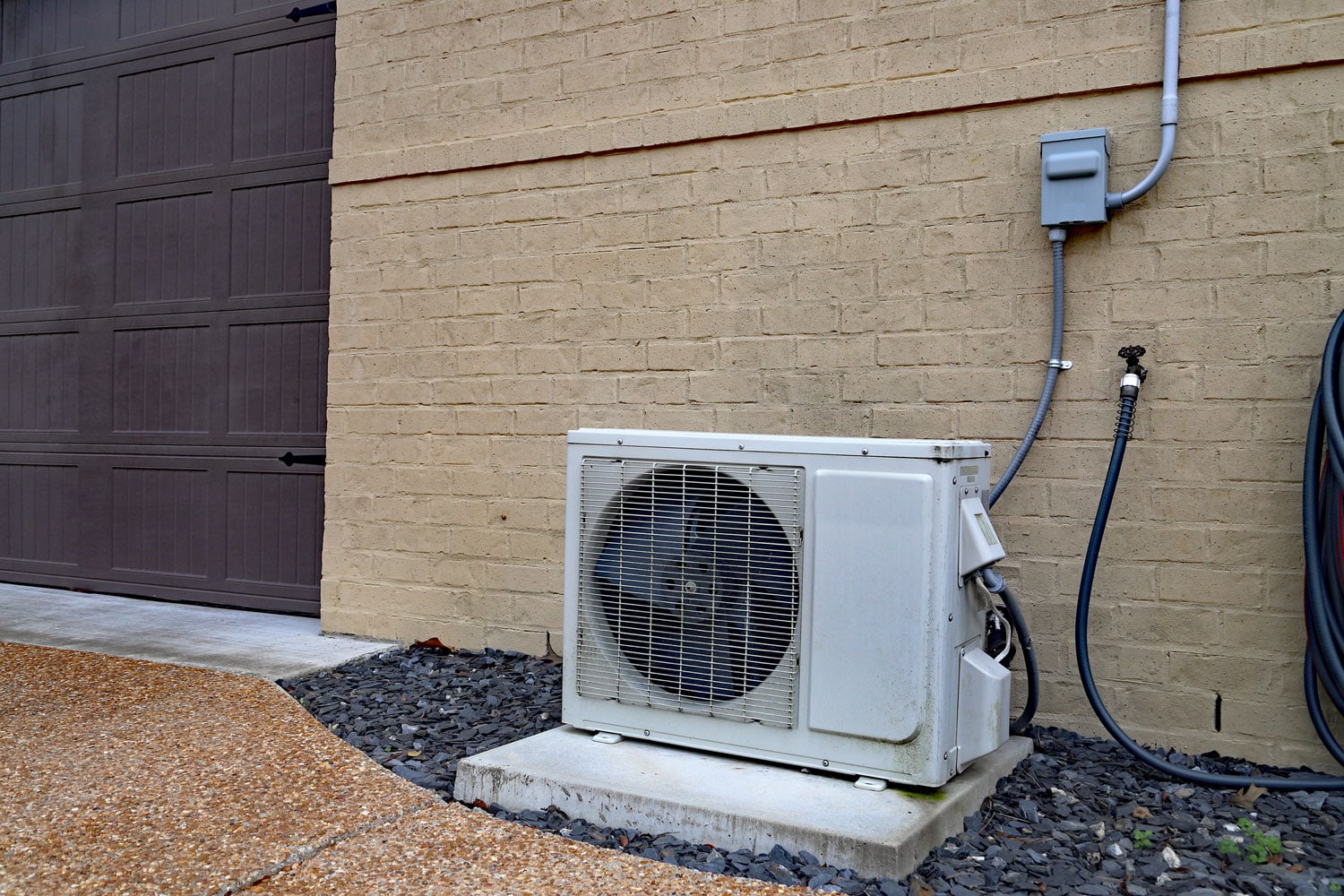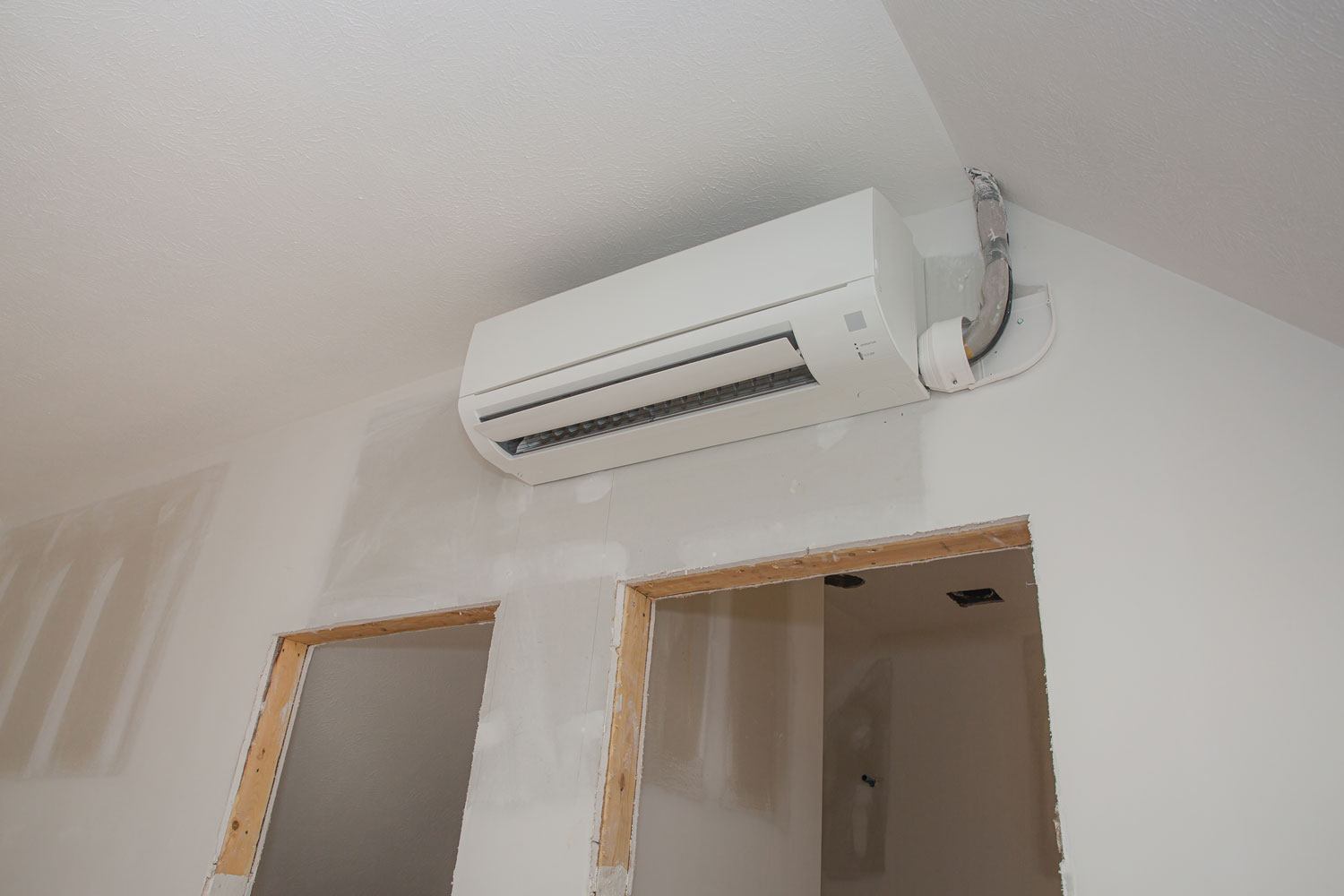If you're trying to keep the interior air of your home comfortable, you might consider installing a ductless AC. But, can a ductless air conditioner remove humidity? We've researched how these units work and what settings they have available to get an answer for you.
Yes, ductless air conditioners remove humidity because they cool the air while eliminating moisture. They evenly distribute cold or warm air, resulting in a more comfortable room temperature. You can also control the temperature and your home's humidity by choosing between 'cool' mode or 'dry' mode.
- Use the 'dry' mode if your home already has a cool temperature and you want to remove humidity for a more comfortable, breathable surrounding.
- Use the 'cool' mode when your home has too much humidity and hot air. Ductless air conditioning absorbs moisture and blows cool air which makes your house more comfortable.
Are you planning to install ductless air conditioners? Learn how they work to better understand how they can efficiently make your home's environment more pleasant.

Understanding Ductless Air Conditioners
A ductless air conditioning system includes one main outdoor unit and one or more indoor mini-split units connected by refrigerant tubing and electric wiring. The indoor units cool or warm the rooms without the need of ductwork.
Ductless air conditioning systems are easier to install and can control the humidity of your entire home compared to typical AC units with ductwork.
Ductless air conditioning systems or mini-splits are individual units placed in each room of the house and linked to an outdoor compressor. Those individual units have evaporator coils with refrigerants to cool the air, then these coils absorb warm air and transport it to the main outdoor processor.

Ductless AC is a better alternative to traditional air conditioners because mini-splits operate with heat pumps that can evenly warm or cool down the room, depending on your needs. Ductless ACs are also much quieter than regular air conditioning and energy efficient. Using Ductless mini-splits can reduce energy use by 30%.
Once the main unit or the outdoor processor has been installed, you can choose a variety of indoor units such as ceiling cassettes and wall-mounted inverters.
How do mini-splits get rid of condensation?
Condensation happens when the air cools down at its dew point, and the vapor turns into tiny water droplets. The mini-splits have drain pipes that transport water to the outdoor processor.
The refrigerant pumps and absorbs the heat from the indoor coil to reach its dew point, and the moisture turns into water droplets. These droplets fall into the trench inside the mini-split. The condensed water droplet falls from the trench into the drainpipe, then is transported to the outer processor or the main unit.
How much humidity does a mini-split remove?
Mini-split can remove the humidity level from 45-55%. To improve the dehumidification of an inverter mini-split, set a higher temperature at a low fan speed and give time for the system to remove the moisture in the air.
Is AC dry mode good for health?
The humid air can affect your health because many harmful viruses and bacteria live in a humid environment. A dry air conditioning system helps absorb humidity and turn it into cool, dry air. It lessens the possibility of having air-borne viruses in your house.
Is it cheaper to run a dehumidifier or an air conditioner?

The dehumidifier consumes less energy and is much cheaper than air conditioners. It is designed to reduce moisture, useful in dealing with hot weather. It removes and dries out the house's air to make it more comfortable.
However, it does not reduce temperature directly. That is the time you will need a second appliance to cool down the air, like an electric fan or air conditioning, which will add up to energy use.
This is where ductless air conditioning comes in. The system can do both humidify and cool or warm the air. Choosing which one you should use depends on your location, budget, house design, and your climate needs.
Advantages of Ductless Air Conditioning System
- Mini-splits have a heat pump that can warm the room during winter and cool down during summer.
- Mini-splits do not lose air through ducts and leaks, which saves energy up to 30%.
- You have full control of the temperature in each room.
- Quieter than regular air conditioning.
- You can control the temperature and humidity in each room by using remote controls.
- It also has less work in installation and less maintenance to have mini-splits than having centralized air conditioning with ductworks.
Disadvantages of Ductless Air Conditioning System
- It is much more expensive than the regular air conditioning.
- You need to clean the filters at least once a month to remove dust and debris.
- You will need a fuel backup to run ductless heat if you live in an extremely cold place.
What sizes do you need for a Ductless Air Conditioning System?

There are affordable mini-splits available on the market. It depends on your needs, your budget and the size of your rooms. Choosing the right size is one of the best ways to use the system at its full functionality.
Simply measure the room's size, including cabinets. Listed below is the ideal BTU (British Thermal Unit) capacity. You can use this as a basic reference.
- Space: 150 to 250 square feet - BTU Capacity: 6,000
- Space: 250 to 300 square feet - BTU Capacity: 7,000
- Space: 300 to 350 square feet - BTU Capacity: 8,000
You should consult an installation expert for the proper BTU capacity you need before buying your equipment.
Tips For Using A Ductless Air Conditioning System

- Maintenance of ductless air conditioning can be a lot of work, but not maintaining it would shorten its life and function.
- Remove the dust from the exterior weekly to avoid accumulating too much and finding its way to the operating units. Wipe the exterior of each unit with a damp cloth or a cleaner. Make sure that the vents are dust and debris free to avoid clogging.
- Keep other furniture and appliances away from the AC. Every device needs room to breathe for smooth functioning.
- Turn the system off while cleaning, only making sure you won't electrocute yourself, also to avoid damaging the system.
- Cleanse the filters at least once a month. Remove them and wipe with a clean, dry cloth. Dust in AC can cause allergic reactions and other breathing problems.
- You can wash the coils using a garden hose to spray the unit.
- Cleaning the pipes regularly. It can also get clogged by debris, dust, and particles.
- Call a professional. Have them check the ductless air conditioning system at least once a year. Just like humans, appliances need to be checked from time to time to function smoothly.
- Check for air leaks in your rooms. It is not wise to use big equipment if there are leaky holes.
Final Thoughts

A mini-split AC can aid in keeping your air quality healthy and feeling comfortable. These units can remove humidity from the air, given they are appropriately set to run either 'cool' mode or 'dry' mode based on the air conditions within the home.
Learn more about mini-split ACs by reading these additional articles:

Can these mini split air conditioners be used in an cement home? I live in Guatemala.